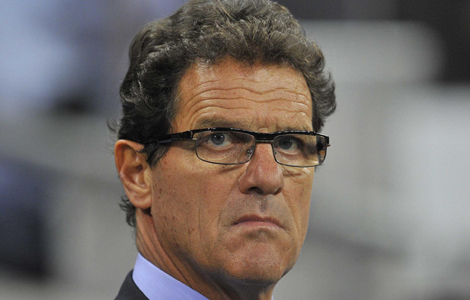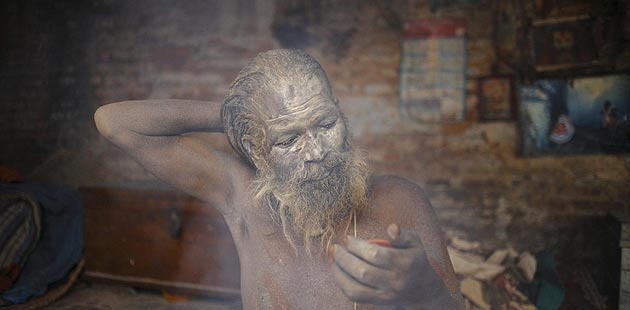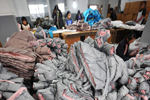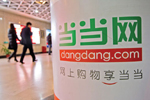PBOC sets 14% target for money supply growth rate
Updated: 2012-02-16 09:37
By Wang Xiaotian (China Daily)
|
|||||||||
BEIJING - The People's Bank of China, the central bank, has set a growth target for M2 money supply at 14 percent for 2012, according to a report on its official website on Wednesday.
"The government must try its best to guarantee money supply growth of at least 14 percent if it does want to shore up the economy. Market liquidity is already very tight," said He Zhicheng, chief economist at the Agricultural Bank of China Ltd.
The broad measure of money supply, M2, which covers cash in circulation and all deposits, grew 12.4 percent year-on-year as of the end of January, the slowest rate since June 2001.
As of the end of 2011, M2 had increased 13.6 percent year-on-year, compared with an official target of 16 percent set at the start of the year.
"The target of 14 percent indicates that the money supply this year will remain stable.
"Given expectations of continuous capital outflows, we predict that new yuan lending for 2012 will be considerable" and probably exceed 8 trillion yuan ($1.27 trillion), said Zhang Xinfa, an analyst at China Galaxy Securities Co Ltd.
Although the central government has signaled that it would loosen credit controls, it's difficult for banks to lend more when they face tougher capital-adequacy requirements and accelerating deposit outflows, said He.
Concerns about market liquidity and economic weakness have deepened since it was reported that banks had only extended 738.1 billion yuan in new loans last month, less than the forecast 1 trillion yuan, while 800 billion yuan flowed out of the banks during the month.
The PBOC said it would maintain appropriate lending growth and keep total financing at a "reasonable" level.
"Our baseline scenario suggests that if China is to maintain M2 growth at 14 percent in 20 12 and if capital inflows remain sizable, two to three reserve-requirement ratio cuts will be needed," said Liu Ligang, head of Greater China economics at ANZ Banking Group.
Since a late November cut in the reserve ratio, the PBOC has held off from further reductions, "disappointing the market", Liu said.
"The PBOC is cautious and does not want to over-loosen policy, as growth indicators such as the purchasing managers' index have surprised on the upside. It may not believe that downside risks to growth are very high," said Zhang Zhiwei, Nomura Holdings Inc's chief economist for China.
Zhang said he didn't expect the PBOC to cut the reserve ratio this month. "Instead, we expect it will postpone the cut until March."
China still needs to be wary of the risk of rebounding inflation, especially given the higher-than-expected consumer price index figure of 4.5 percent in January, the PBOC report said.
The figure ended a five-month decline in inflation and generated mixed views on policy-easing expectations.
The central bank said it would use a mix of policy tools, including interest rates, to maintain reasonable credit growth and curb inflation.
It also vowed to make more use of differentiated reserve requirements for commercial lenders to adjust its monetary stance in a flexible way, based on economic and lending conditions.
While there is still high potential inflation pressure, as global liquidity remains loose and commodity prices are likely to increase, China's economy will be subject to rising uncertainty due to a weak global market and unstable capital flows, it said.
According to a Nomura report, the Organization for Economic Cooperation and Development's leading indicator for China dropped to 99.3 in December from 99.8 in November, marking the 12th consecutive monthly decline since its peak in December 2010.
"This indicator has correctly identified turning points in China's industrial production for the last 14 years, and the December reading indicates that growth momentum should continue to weaken in the coming months," it said.
According to He, the end of March or the beginning of April will be the most difficult time for China, as GDP growth may slow to somewhere below 8.5 percent, partly depressed by slumping property prices.
"Then it's time to lower the lending interest rates. And if the CPI remains at somewhere around 4.2 percent in February, a hike in deposit interest rates could be put on the agenda," he said.
Related Stories
PBOC to keep credit, capital levels in check 2011-01-06 07:55
PBOC to focus more on core inflation for monetary policy 2010-12-31 08:14
PBOC vows interest rate prudency 2010-12-17 07:56
PBOC drains 83b yuan from money market 2011-04-15 09:18
- Experts: EU statement opens door to status
- Assembling ideas for Ikeas in China
- Investment 'will continue'
- PBOC sets 14% target for money supply growth rate
- Firm broke trademark deal: Apple
- Soft landing on the horizon
- Urbanization to engine China's economy
- Yuan appreciation won't help foreign firms: study









